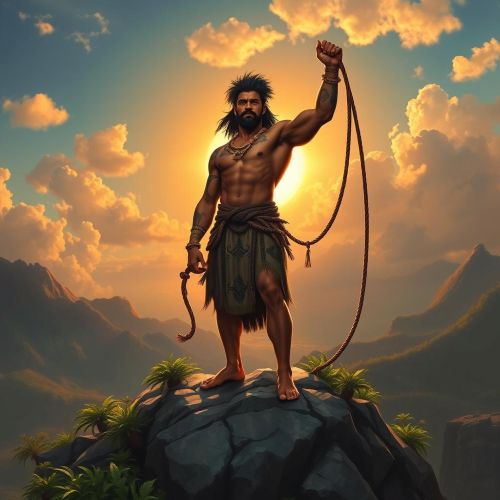Apu : The Mountain Spirit
Listen
At a glance
| Description | |
|---|---|
| Origin | Inca Mythology |
| Classification | Spirits |
| Family Members | N/A |
| Region | Peru, Equador, Bolivia |
| Associated With | Mountains |
Apu
Introduction
In the mythology and religion of Bolivia, Ecuador, and Peru, an apu is used to refer to the spirits of the mountains or solitary rocks, which are often adorned with anthropomorphic features that protect the inhabitants. The term originated from the Inca Empire. The Inca people were known for their spiritual beliefs and were always looking for life in various places. In the mythology of the Incas, the word “Apu” refers to the powerful spirits that reside in the summits of the mountains, as well as the caves and rocks that protect their people.
Physical Traits
The Incas regarded the mountains as great lords who ruled over the people. This reverence for the mountains dates back several centuries before the Incas. Today, this veneration still continues in the culture of the Andes Mountains’ local inhabitants. Each region in the Andean region has its own apu, which literally means mountain, and its inhabitants protect it. The term is typically associated with male spirits, and the Incas believed that taller apu spirits were more powerful.
Family
In addition to mountains, there are also other living beings known as Tekse Apu. These include Viracocha, Pachamama, Taita Inti, Taita Waira, Mama Unu, Mother Water, Mother Moon, and Mama Killa. These are all seen all around the world and are referred to as Tekse Apu, which means “global Apu”.
Other names
The term “apu” is used by the Incas to refer to a mountain that has a living spirit. Its energy and body are said to form the apu’s wasi, or home. There are various types of apu, such as Ayllu Apu, which is the protector of a village, Llaqta Apu, which is the protector of a region, and Suyu Apu, which is the protector of a country.
Powers and Abilities
The mythology of the Incas revolved around three realms: Hanan Pacha, Kay Pacha, and Uku Pacha. Mountains rising from the human world up to Hanan Pacha offered the people a connection with their powerful deities.
The apu spirits were known to protect their surroundings and the nearby inhabitants of the Inca Empire. Whenever there was trouble, the apus would be appeased or called upon. It’s believed that these individuals were the ancestors of the Andes Mountains’ people.
Those who come from traditional Andean households believe that the gods are powerful and that they can communicate with those in the mountains through the arrangement of leaves on the ground. In addition, the highest peaks in the country are regarded as sacred by the Incas due to their proximity to the sky.
Modern Day Influence
The apu mountain spirits did not fade away following the demise of the Inca Empire. In fact, they are very much alive in modern Peruvian folklore. Many present-day Peruvians, especially those born and raised within traditional Andean communities, still hold beliefs that date back to the Incas (albeit these beliefs are often combined with aspects of Christian faiths, most frequently the Catholic faith).
Frequently Asked Questions
What is lorem Ipsum?
I am text block. Click edit button to change this text. Lorem ipsum dolor sit amet, consectetur adipiscing elit. Ut elit tellus, luctus nec ullamcorper mattis, pulvinar dapibus leo.
What is lorem Ipsum?
I am text block. Click edit button to change this text. Lorem ipsum dolor sit amet, consectetur adipiscing elit. Ut elit tellus, luctus nec ullamcorper mattis, pulvinar dapibus leo.
What is lorem Ipsum?
I am text block. Click edit button to change this text. Lorem ipsum dolor sit amet, consectetur adipiscing elit. Ut elit tellus, luctus nec ullamcorper mattis, pulvinar dapibus leo.
What is lorem Ipsum?
I am text block. Click edit button to change this text. Lorem ipsum dolor sit amet, consectetur adipiscing elit. Ut elit tellus, luctus nec ullamcorper mattis, pulvinar dapibus leo.
What is lorem Ipsum?
I am text block. Click edit button to change this text. Lorem ipsum dolor sit amet, consectetur adipiscing elit. Ut elit tellus, luctus nec ullamcorper mattis, pulvinar dapibus leo.



